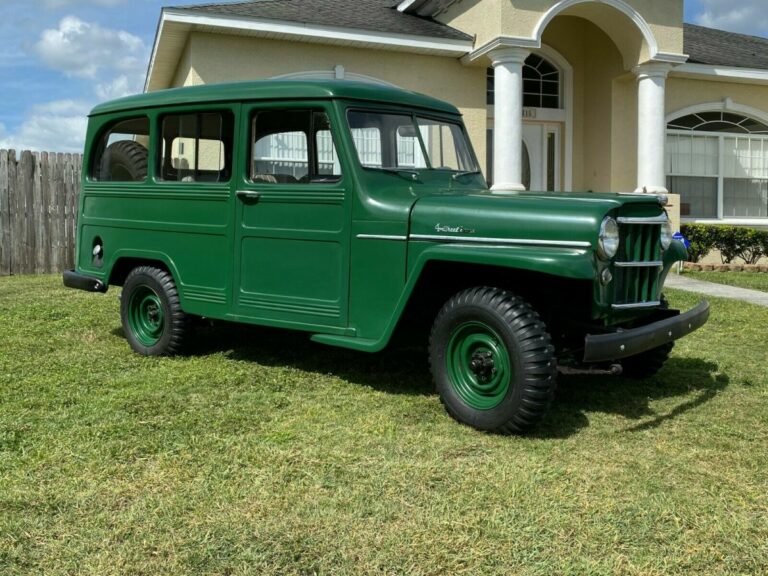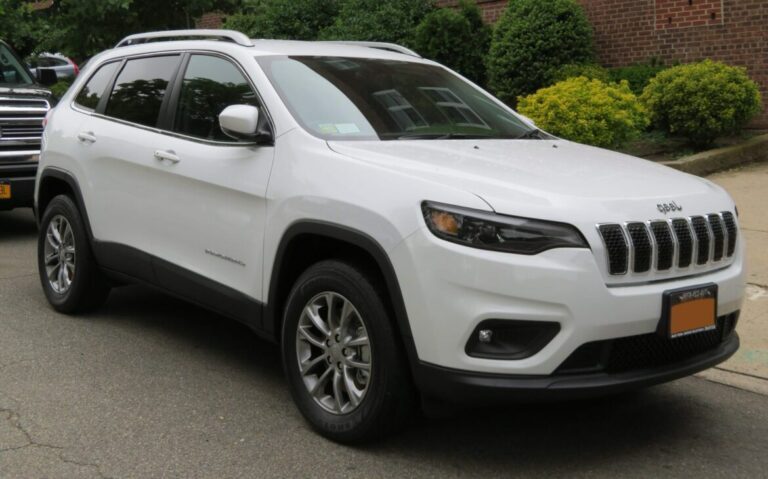1999 Jeep Wrangler Hardtop For Sale: A Comprehensive Buyer’s Guide to an Enduring Icon
1999 Jeep Wrangler Hardtop For Sale: A Comprehensive Buyer’s Guide to an Enduring Icon jeeps.truckstrend.com
The allure of a Jeep Wrangler is undeniable, a symbol of freedom, adventure, and rugged capability. Among its celebrated lineage, the TJ generation (1997-2006) holds a special place in the hearts of off-road enthusiasts and casual drivers alike. Specifically, the 1999 Jeep Wrangler Hardtop represents a sweet spot: a classic yet still highly functional vehicle that offers the iconic open-air experience of a Wrangler with the added benefits of security, weather protection, and improved cabin acoustics that only a hardtop can provide. For anyone seeking to embrace the Jeep lifestyle, or to add a versatile and modifiable vehicle to their garage, understanding what makes a 1999 Hardtop model a worthwhile pursuit is essential. This guide delves deep into the nuances of finding, evaluating, and owning this enduring American classic.
1999 Jeep Wrangler Hardtop For Sale: A Comprehensive Buyer’s Guide to an Enduring Icon
Why the 1999 Jeep Wrangler TJ Hardtop Remains a Coveted Classic
The TJ generation marked a significant evolution for the Wrangler, transitioning from the leaf-spring suspension of its YJ predecessor to a more comfortable and capable coil-spring setup. This change dramatically improved ride quality and off-road articulation without sacrificing the Wrangler’s legendary robustness. The 1999 model year falls squarely within the golden era of the TJ, benefiting from refinements made since its 1997 introduction, while still retaining the simpler, more analog feel that many enthusiasts cherish.
The hardtop, a defining feature for many buyers, transforms the Wrangler from a fair-weather toy into a practical, year-round vehicle. Unlike the soft top, the hardtop offers superior insulation against noise and temperature extremes, enhanced security for belongings, and a more robust structure for mounting roof racks or other accessories. For those living in colder climates or needing daily usability, a factory hardtop is often a non-negotiable feature, making a 1999 model equipped with one a particularly desirable find.
Key Features and Specifications of the 1999 Jeep Wrangler TJ
Understanding the core components of a 1999 TJ is crucial for any potential buyer.
- Engine Options: The 1999 TJ offered two primary engine choices:

- 2.5L AMC I4 (Four-Cylinder): Producing around 120 horsepower, this engine is known for its reliability and decent fuel economy for a Jeep. It’s perfectly adequate for city driving and light off-roading.
- 4.0L AMC I6 (Inline-Six): The true workhorse and the preferred choice for most enthusiasts, this engine delivers 190 horsepower and substantial torque (around 225 lb-ft). Its legendary durability, ample power for highway cruising, and strong off-road performance make it highly sought after.
- Transmission:

- 5-speed Manual (AX-5 for 2.5L, AX-15 for 4.0L): A popular choice for those who prefer full control and engaging driving.
- 3-speed Automatic (32RH for 2.5L, 30RH for 4.0L): A durable, if somewhat basic, automatic transmission. Later TJs (after 2002) received a 4-speed automatic, but the 3-speed is still reliable.
- Transfer Case: The standard Command-Trac NP231 transfer case provides part-time 4WD with 2WD High, 4WD High, and 4WD Low settings, offering excellent capability in diverse terrains.
- Axles: Typically, a Dana 30 front axle and a Dana 35 rear axle were standard. Higher trims or optional packages might feature a more robust Dana 44 rear axle, which is highly desirable for serious off-roaders.
- Suspension: The coil-spring suspension at all four corners was a revolutionary improvement for the Wrangler, providing a more compliant ride on pavement and greater articulation off-road compared to its leaf-sprung predecessors.
- Hardtop: The factory hardtop is a multi-piece, removable unit, often with a rear wiper and defroster. It’s typically made of fiberglass and fits snugly, offering a more enclosed feel than a soft top.

What to Look For When Buying a 1999 Jeep Wrangler Hardtop
Purchasing a 25-year-old vehicle requires a discerning eye. Here’s a detailed checklist:
- Rust (The Number One Priority): This is the Achilles’ heel of TJs.
- Frame: Inspect the frame meticulously, especially around the control arm mounts, skid plate mounts, and rear sections near the bumper. Surface rust is normal, but significant flaking, perforations, or repairs are major red flags.
- Body: Check the rocker panels, floorboards (under the carpet), front fenders (behind the flares), tailgate (around the hinges and spare tire mount), and the cowl area.
- Hardtop: Inspect for cracks, especially around mounting points and windows. Check the condition of the seals around the doors and windows.
- Engine Condition:
- 4.0L I6: Listen for exhaust manifold cracks (common, but repairable), check for oil leaks (rear main seal is notoriously common but not always critical), and ensure proper idle and acceleration.
- 2.5L I4: Similar checks for leaks and smooth operation.
- Check for proper fluid levels and clarity (oil, coolant, transmission, transfer case).
- Transmission & Drivetrain:
- Manual: Check for smooth shifting, no grinding, and a good clutch feel.
- Automatic: Ensure smooth, timely shifts without hesitation or slipping.
- Engage 4WD (High and Low) and drive briefly to ensure the transfer case engages properly and there are no binding issues or unusual noises.
- Inspect U-joints on drive shafts for play.
- Suspension & Steering:
- Look for worn bushings, leaky shocks, or damaged control arms.
- Check for excessive steering play – common culprits include worn tie rod ends, track bar, or steering box.
- If lifted, ensure it was done professionally with quality components.
- Electrical System: Test all lights, gauges, wipers (front and rear), radio, HVAC controls, and power windows (if equipped).
- Tires & Brakes: Check tire tread depth and even wear. Inspect brake pads, rotors, and fluid.
- Interior: Assess the condition of seats, carpet (lift it to check floorboards), and dashboard. Look for signs of water leaks.
- Documentation: Request service records, proof of ownership, and a clear title. A CarFax or AutoCheck report can reveal accident history or title issues.
- Test Drive: Drive on various surfaces, including highway speeds, to identify any vibrations, noises, or handling issues.
The Benefits of Owning a 1999 Jeep Wrangler Hardtop
Beyond its iconic looks, a 1999 TJ Hardtop offers a wealth of advantages:
- Legendary Off-Road Prowess: With its short wheelbase, solid axles, and robust 4WD system, the TJ is incredibly capable on trails, rocks, and mud.
- Unmatched Modifiability: The aftermarket for TJs is vast. From lift kits and larger tires to armor, bumpers, and engine upgrades, you can customize a TJ to your heart’s content.
- Durability and Simplicity: TJs are known for their robust, relatively simple mechanicals, making them easier for DIY enthusiasts to maintain and repair.
- Strong Resale Value: Well-maintained TJs, especially those with the 4.0L engine and a hardtop, hold their value exceptionally well. They are becoming increasingly sought after as modern classics.
- Year-Round Versatility: The hardtop transforms the Wrangler into a practical vehicle for all seasons, offering comfort and security that a soft top cannot match.
- Vibrant Community: Owning a Jeep means joining a passionate and supportive community of fellow enthusiasts, ready to offer advice, share tips, and organize trail rides.
Maintenance Tips and Common Challenges
While durable, a 1999 TJ will require consistent attention:
- Preventative Rust Management: Regular washing, especially after winter driving or off-roading, and applying rust-preventative coatings (like Fluid Film or POR-15) are crucial. Address any small rust spots immediately.
- Fluid Checks: Regularly inspect and change engine oil, transmission fluid, transfer case fluid, and differential fluids.
- Hardtop Care: Inspect seals periodically for cracking or shrinking and replace as needed to prevent leaks. Clean and wax the hardtop just like the rest of the vehicle. When removing it for storage, ensure it’s on a stable, padded surface or a dedicated hoist system.
- Common Mechanical Issues: Be prepared for potential rear main seal leaks (4.0L), occasional exhaust manifold cracks, and wear in steering/suspension components (ball joints, tie rod ends, control arm bushings). These are typically manageable repairs.
- Electrical Gremlins: Older vehicles can develop minor electrical issues. Check grounds and wiring for corrosion.
How to Navigate the Purchase Process
- Set a Realistic Budget: Factor in not just the purchase price, but also potential immediate repairs, registration, insurance, and any desired modifications.
- Research the Market: Browse online marketplaces (Craigslist, Facebook Marketplace, AutoTrader, dedicated Jeep forums) to understand current pricing based on condition, mileage, and features.
- Pre-Purchase Inspection (PPI): This is highly recommended. Have a trusted mechanic (preferably one familiar with Jeeps) perform a thorough inspection, especially focusing on the frame and drivetrain. This small investment can save you thousands.
- Negotiation: Be prepared to negotiate. Use any identified issues from your inspection as leverage.
- Paperwork: Ensure the seller has a clear title in their name and that you receive a proper bill of sale. Understand your local DMV requirements for title transfer and registration.
- Insurance: Get insurance quotes before you buy to ensure affordability.
Price Guide: 1999 Jeep Wrangler Hardtop For Sale
The price of a 1999 Jeep Wrangler Hardtop can vary significantly based on condition, mileage, engine, transmission, and any modifications. This table provides a general range and what to expect:
| Category | Item/Feature | Condition/Details | Estimated Value/Price Range | Notes
.jpg?t=166273357334)




